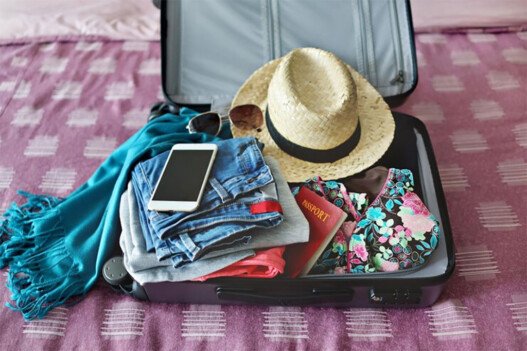Bali—a timeless paradise nestled in the heart of Indonesia—remains one of the most captivating travel destinations in the world. With its rich culture, lush landscapes, spiritual temples, surf-ready beaches, and vibrant nightlife, Bali continues to attract millions of travelers year after year. But while the Island of the Gods offers luxury at every turn, it’s also incredibly budget-friendly—if you know where to look and how to travel smart.
Whether you’re a student, digital nomad, solo traveler, or a family looking for an affordable tropical escape, this comprehensive guide gives you six strategic tips to enjoy Bali in 2025 without draining your wallet. Let’s dive in!
🛏️ 1. Sleep Smart: Budget-Friendly Accommodations in Bali
Bali isn’t just for the rich and famous. You don’t need a private villa with an infinity pool to experience its magic.
✅ Hostels & Guesthouses
In 2025, Bali’s hostel scene is more vibrant than ever. With Wi-Fi, communal spaces, and modern amenities, budget hostels are ideal for solo travelers and backpackers. Towns like Canggu, Ubud, and Seminyak offer dozens of affordable options for under $10–$15 per night.
Pro Tip: Look for hostels that include free breakfast—many offer homemade banana pancakes and Balinese coffee to start your day right.
✅ Homestays
Balinese homestays provide a unique cultural experience. Run by locals, these homes are often nestled in family compounds and include breakfast, hot showers, and genuine hospitality for $15–$25 a night.
✅ Hidden Villas & Discounts
Use apps like Agoda, Airbnb, and Booking.com to find last-minute villa deals. Sharing a villa with friends can bring your costs down to just $20 a night per person.
🛵 2. Move Like a Local: Transportation on a Budget
Transportation in Bali is surprisingly affordable—especially when you ditch taxis and explore like a local.
✅ Rent a Scooter
Scooter rental in 2025 averages about $4–$6 per day, including a helmet and sometimes even rain gear. It’s the fastest, most economical way to get around Bali. Just be sure to carry an international driver’s license.
Safety Reminder: Always wear a helmet and drive cautiously. Bali traffic can be hectic, especially in touristy areas.
✅ Ride-Sharing Apps
Apps like Gojek and Grab are widely available in Bali. They offer scooter taxis and car rides at a fraction of the cost of regular taxis. Bonus: you can also order food and groceries from the same apps!
✅ Bemos and Local Buses
For the truly frugal traveler, local minibuses called bemos run fixed routes between towns. They’re extremely cheap (under $1) but are not always reliable or comfortable.
🍜 3. Feast Without the Price Tag: Eating on a Budget
You don’t need to dine in upscale restaurants to enjoy Bali’s culinary delights. The island is full of flavors that won’t break your budget.
✅ Warungs Are Your Best Friend
Warungs are small family-owned eateries serving authentic Balinese and Indonesian dishes. Meals like nasi goreng (fried rice), mie goreng (fried noodles), and gado-gado (vegetable salad with peanut sauce) cost as little as $1–$2.
✅ Street Food
Try satay skewers, corn-on-the-cob grilled over coconut husk flames, or fresh fruit smoothies for a few cents. Night markets like Pasar Senggol and Sanur Night Market offer endless options.
✅ Cook Your Own Meals
Staying in a homestay or Airbnb with a kitchen? Shop at local markets like Ubud Market or Jimbaran Fish Market for fresh produce and seafood. Cooking your own meals is both a fun experience and a major money saver.
🧘♀️ 4. Free & Low-Cost Activities That Enrich Your Soul
Bali’s natural beauty and spiritual offerings make it the ideal destination for low-cost adventures.
✅ Temples & Spiritual Sites
Bali’s iconic temples—like Tanah Lot, Ulun Danu Beratan, and Lempuyang (The Gates of Heaven)—have modest entrance fees ($1–$5). Dress respectfully by wearing a sarong, which is often provided at the entrance.
✅ Hiking & Waterfalls
Explore Tegenungan Waterfall, Sekumpul Waterfall, or hike Mount Batur for a sunrise experience that costs little or nothing. If you hire a local guide, group up to split the cost.
✅ Free Yoga & Meditation
Ubud offers donation-based or community yoga classes, often held in scenic gardens or studios. Some spiritual centers offer free group meditations or healing circles.
✅ Beaches Galore
Beaches like Padang Padang, Echo Beach, and Balangan are completely free. Bring your own towel, sunscreen, and snacks to avoid beachside markups.
🎫 5. Smart Spending: Deals, Discounts & Bartering
Stretch your rupiah further by knowing when, where, and how to spend wisely.
✅ Travel Off-Peak
Avoid the July–August high season. Instead, visit between February to April or September to November when flights and accommodations are cheaper, and crowds are thinner.
✅ Barter Politely
In markets and tourist shops, bartering is expected. Don’t be aggressive—smile and negotiate respectfully. A good tip: offer 60% of the asking price and meet halfway.
✅ Use Local SIM Cards
International roaming can be costly. Instead, buy a local SIM card with data for under $5. Providers like Telkomsel and XL Axiata offer excellent coverage island-wide.
✅ Avoid Tourist Traps
Skip overpriced tourist restaurants and shops in central Seminyak or Uluwatu. Wander a few blocks away for better prices and more authentic experiences.
💻 6. Digital Nomad Hacks: Work and Travel Cheaply
Bali is a haven for digital nomads. Here’s how to enjoy the island while keeping your productivity and budget on track.
✅ Co-working Spaces
Places like Dojo Bali (Canggu), Hubud (Ubud), and Outpost offer flexible passes starting at $10/day. Many include free coffee, high-speed Wi-Fi, and networking events.
✅ Long-Stay Discounts
Staying longer? Many accommodations, scooter rentals, and yoga studios offer substantial discounts for weekly or monthly bookings.
✅ Community Groups & Events
Join Bali budget travel Facebook groups or attend meetups. You’ll find tips on everything from job boards to second-hand surfboards.
✅ Free Learning & Volunteering
Want to give back while saving money? Look for volunteer opportunities through platforms like Workaway or local NGOs. Some offer free accommodation and meals in exchange for your time.
🧳 Final Words: Bali on a Budget Is Beautiful
Traveling to Bali in 2025 doesn’t require a trust fund or platinum credit card. With the right knowledge, open-mindedness, and a little planning, you can explore this incredible island for a fraction of the cost others pay—without sacrificing the magic.
Remember: budget travel isn’t about depriving yourself. It’s about making intentional choices that allow you to connect deeper—with the people, culture, and spirit of a place.
So pack light, plan smart, and embrace the adventure. Bali is calling.









